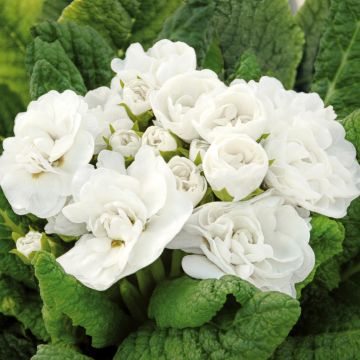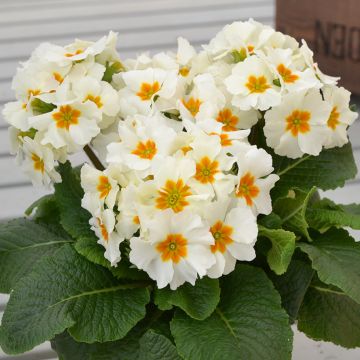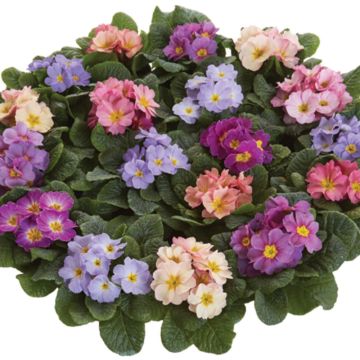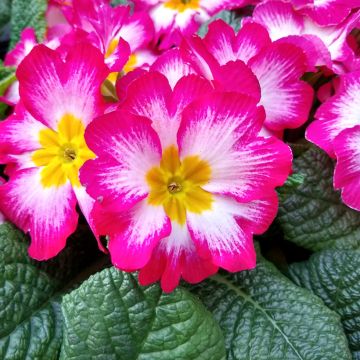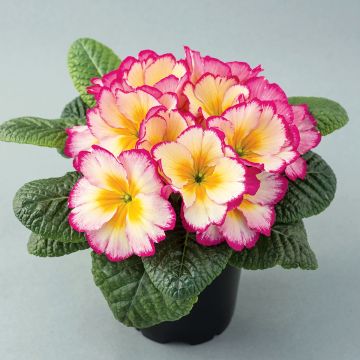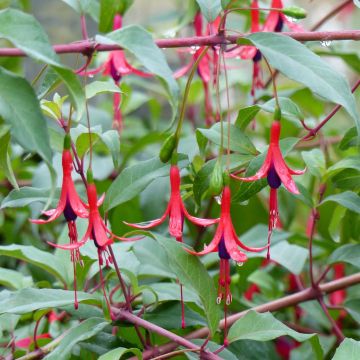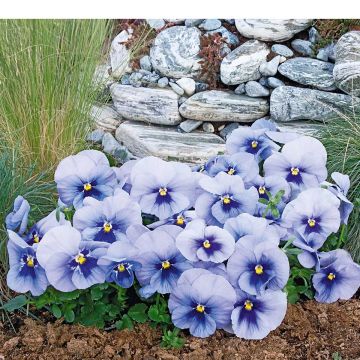Shipping country and language
Your country of residence may be:
Your country of residence is:
For a better user experience on our website, you can select:
Your shipping country:
Andorra
Austria
Belgium
Bulgaria
Canada
Chile
Croatia
Cyprus
Czechia
Denmark
Estonia
Finland
France
Germany
Greece
Hungary
Iceland
Ireland
Italy
Latvia
Lithuania
Luxembourg
Malta
Monaco
Netherlands
Poland
Portugal
Romania
Slovakia
Slovenia
Spain
Sweden
Switzerland
United Kingdom
We only deliver seed and bulb products to your country. If you add other products to your basket, they cannot be shipped.
Language:
French
German
Spanish
English
My Account
Hello
My wish lists
Plantfit
Log in / Register
Existing customer?
New customer?
Create an account to track your orders, access our customer service and, if you wish, make the most of our upcoming offers.


Primevère double Belarina Nectarine - Primula vulgaris
Primula vulgaris Belarina Nectarine- English Primrose
Primula vulgaris BELARINA Nectarine ('Kerbelnec')
Primrose, English Primrose, Common Primrose
Superb!
pilou, 24/03/2024
Order in the next for dispatch today!
Dispatch by letter from €3.90.
Delivery charge from €5.90 Oversize package delivery charge from €6.90.
More information
This item is not available in your country.
Schedule delivery date,
and select date in basket
This plant carries a 6 months recovery warranty
More information
We guarantee the quality of our plants for a full growing cycle, and will replace at our expense any plant that fails to recover under normal climatic and planting conditions.
From €5.90 for pickup delivery and €6.90 for home delivery
Express home delivery from €8.90.

Does this plant fit my garden?
Set up your Plantfit profile →
Description
This 'Belarina Nectarine' double Primrose, derived from our perennial and native Primula vulgaris, usually blooms from January to April. It presents its very double corollas, in a delicious and fruity harmony of soft yellow more or less filled with rosy orange, with a hint of lavender. They are nestled in a tangle of broad, wavy, evergreen leaves, a vibrant green. Once widely planted in English cottages, double primroses had almost disappeared. New varieties are bringing back these very romantic biennials to the forefront, much to our delight! They are perfect in pots, containers, borders, and even grow in shade in fertile and moist soil.
The 'Belarina Nectarine' Primula vulgaris is a herbaceous biennial plant of the primrose family. It is part of a series of recent creations that stand out for their December-January to March-April flowering, for the doubling of their corollas and their vibrant colours. They are floriferous plants, forming beautiful dense foliage clumps in just a few months, reaching heights of 15 to 20 cm (6 to 8in) and widths of 25 to 30 cm (10 to 12in). They develop persistent rosettes of wavy and veined leaves, a beautiful vibrant green. 'Belarina Nectarine' produces 3 cm (1in) diameter flowers, which appear for 4 to 5 weeks. They are very double, resembling small roses, with a soft yellow colour, infused with a sunset orange heart slowly devouring the petals. They are gathered in perfect bouquets, borne by short hairy peduncles among the luxuriant foliage.
The 'Belarina' primroses are versatile biennials and really easy to grow. They deserve a place in every garden and on every balcony. Colourful and floriferous, they herald the return of spring. In borders or containers on a balcony, these little plants are ideal companions for tulips, pansies, horned violets, and forget-me-nots. Under deciduous cover, in rockeries and lawns, they weave among snowdrops and violets. The leaves and flowers are edible and can be consumed raw or cooked.
Benefits:
They are the same as those of the common primrose and the oxlip: the flowers have soothing and calming properties and are used in expectorant preparations. The leaves help prevent bruising, and the whole plant (especially the root) has analgesic, antispasmodic, diuretic, and expectorant properties.
Note: Please be aware that our plug plants are professional products intended for experienced gardeners: upon receipt, repot them as soon as possible, in pots, containers, or directly in borders.
Primula vulgaris Belarina Nectarine- English Primrose in pictures


Flowering
Foliage
Plant habit
Botanical data
Primula
vulgaris
BELARINA Nectarine ('Kerbelnec')
Primulaceae
Primrose, English Primrose, Common Primrose
Cultivar or hybrid
Other Garden primroses
Planting and care
The plug plants of double primroses 'Belarina' can be planted in pots and containers or directly in the ground in a finely prepared and enriched soil. Plant them if possible upon receipt, in September-October. If the planned location is not yet ready or the conditions are unfavorable for planting, you can let them grow in buckets for 4 to 6 weeks.
In pots and containers, use a good potting soil for flowering plants (geranium potting soil) enriched with clay and slow-release fertilizer, light and well-draining. The top of the plug should be level with the soil. Water generously at planting and during the following weeks, as plug plants can quickly dry out. However, be careful not to overwater! Make sure to use containers with drainage holes and empty the saucer 10 minutes after watering. Remember to water even during winter if it doesn't rain or if the container is placed in a sheltered location from precipitation. Do not water during freezing periods.
Very floriferous and fast-growing, the perennial primroses BELARINA are hungry plants. As soon as growth resumes, at the end of February or early March, and throughout the flowering period, apply a liquid fertilizer for flowering plants containing iron and trace elements 1 to 2 times a week with the watering water. Remove faded flowers to promote new blooming. Once the flowering is over, potted plants can be replanted in the garden in partial shade.
Planting period
Intended location
Care
- , onOrder confirmed
Reply from on Promesse de fleurs
Plug plants - Annuals
Haven't found what you were looking for?
Hardiness is the lowest winter temperature a plant can endure without suffering serious damage or even dying. However, hardiness is affected by location (a sheltered area, such as a patio), protection (winter cover) and soil type (hardiness is improved by well-drained soil).

Photo Sharing Terms & Conditions
In order to encourage gardeners to interact and share their experiences, Promesse de fleurs offers various media enabling content to be uploaded onto its Site - in particular via the ‘Photo sharing’ module.
The User agrees to refrain from:
- Posting any content that is illegal, prejudicial, insulting, racist, inciteful to hatred, revisionist, contrary to public decency, that infringes on privacy or on the privacy rights of third parties, in particular the publicity rights of persons and goods, intellectual property rights, or the right to privacy.
- Submitting content on behalf of a third party;
- Impersonate the identity of a third party and/or publish any personal information about a third party;
In general, the User undertakes to refrain from any unethical behaviour.
All Content (in particular text, comments, files, images, photos, videos, creative works, etc.), which may be subject to property or intellectual property rights, image or other private rights, shall remain the property of the User, subject to the limited rights granted by the terms of the licence granted by Promesse de fleurs as stated below. Users are at liberty to publish or not to publish such Content on the Site, notably via the ‘Photo Sharing’ facility, and accept that this Content shall be made public and freely accessible, notably on the Internet.
Users further acknowledge, undertake to have ,and guarantee that they hold all necessary rights and permissions to publish such material on the Site, in particular with regard to the legislation in force pertaining to any privacy, property, intellectual property, image, or contractual rights, or rights of any other nature. By publishing such Content on the Site, Users acknowledge accepting full liability as publishers of the Content within the meaning of the law, and grant Promesse de fleurs, free of charge, an inclusive, worldwide licence for the said Content for the entire duration of its publication, including all reproduction, representation, up/downloading, displaying, performing, transmission, and storage rights.
Users also grant permission for their name to be linked to the Content and accept that this link may not always be made available.
By engaging in posting material, Users consent to their Content becoming automatically accessible on the Internet, in particular on other sites and/or blogs and/or web pages of the Promesse de fleurs site, including in particular social pages and the Promesse de fleurs catalogue.
Users may secure the removal of entrusted content free of charge by issuing a simple request via our contact form.
The flowering period indicated on our website applies to countries and regions located in USDA zone 8 (France, the United Kingdom, Ireland, the Netherlands, etc.)
It will vary according to where you live:
- In zones 9 to 10 (Italy, Spain, Greece, etc.), flowering will occur about 2 to 4 weeks earlier.
- In zones 6 to 7 (Germany, Poland, Slovenia, and lower mountainous regions), flowering will be delayed by 2 to 3 weeks.
- In zone 5 (Central Europe, Scandinavia), blooming will be delayed by 3 to 5 weeks.
In temperate climates, pruning of spring-flowering shrubs (forsythia, spireas, etc.) should be done just after flowering.
Pruning of summer-flowering shrubs (Indian Lilac, Perovskia, etc.) can be done in winter or spring.
In cold regions as well as with frost-sensitive plants, avoid pruning too early when severe frosts may still occur.
The planting period indicated on our website applies to countries and regions located in USDA zone 8 (France, United Kingdom, Ireland, Netherlands).
It will vary according to where you live:
- In Mediterranean zones (Marseille, Madrid, Milan, etc.), autumn and winter are the best planting periods.
- In continental zones (Strasbourg, Munich, Vienna, etc.), delay planting by 2 to 3 weeks in spring and bring it forward by 2 to 4 weeks in autumn.
- In mountainous regions (the Alps, Pyrenees, Carpathians, etc.), it is best to plant in late spring (May-June) or late summer (August-September).
The harvesting period indicated on our website applies to countries and regions in USDA zone 8 (France, England, Ireland, the Netherlands).
In colder areas (Scandinavia, Poland, Austria...) fruit and vegetable harvests are likely to be delayed by 3-4 weeks.
In warmer areas (Italy, Spain, Greece, etc.), harvesting will probably take place earlier, depending on weather conditions.
The sowing periods indicated on our website apply to countries and regions within USDA Zone 8 (France, UK, Ireland, Netherlands).
In colder areas (Scandinavia, Poland, Austria...), delay any outdoor sowing by 3-4 weeks, or sow under glass.
In warmer climes (Italy, Spain, Greece, etc.), bring outdoor sowing forward by a few weeks.
